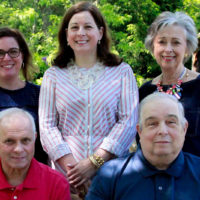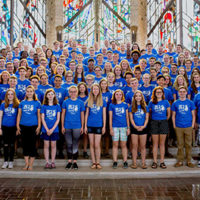The workforce development ecosystem is an amalgam of governmental entities, employers, educational institutions, charitable foundations, and non-profits. They work together to prepare people for employment, or career advancement, to increase the prosperity of individuals and communities while simultaneously meeting the needs of employers. Workforce development is particularly important for people who face obstacles (homelessness, justice-involvement, low-income) in obtaining a good job. Recognizing this, The Christopher Family Foundation supports programs that provide training and wrap-around services to help individuals with multiple barriers to employment secure jobs that pay family-sustaining wages.
The world of workforce programming continues to evolve to address the numerous needs of individuals seeking employment. Sectoral training, especially in manufacturing and construction, has proven to be an effective model to transition workers into meaningful careers and increase their earnings over the long term. Employment social enterprises (ESEs) are on the rise, allowing people to develop job readiness skills and be better prepared for permanent jobs. Additionally, new energy is being infused in the field by the Good Jobs Challenge, the U.S. Economic Development Association’s massive investment of $500 million in workforce systems to broaden career opportunities and increase economic mobility for more Americans. As an awardee, The Chicago Cook Workforce Partnership will collaborate with local organizations to place 1,800 participants in good jobs by August 2025.
Within the ecosystem of workforce development, there are many non-profits with various approaches. Here are some of the successful program models that they are implementing with the shared goal of connecting individuals with good jobs.
Employment Preparation and Placement
Many organizations provide foundational services such as work readiness skills, resume writing, job search and placement assistance, and follow-up to ensure job retention.
Adult Basic Education Programs
ABE programs prepare students to get their GED or learn English as a second language.
Bridge Programs
These programs teach reading, math, and language skills related to certain occupations, like mechanical assembler. Some bridge programs prepare students to transition into post-secondary education.
Sector-Based Training
In this approach, participants are trained for occupations within a high demand industry, like manufacturing or construction. Participants can earn industry credentials, like a welding certificate.
Work-Based Learning
WBL provides workers with income while they gain job skills. This includes transitional jobs, social enterprises, on-the-job training, and apprenticeships.
Incumbent Worker Training
With federal funding, companies can provide their employees with the skills necessary to retain their jobs or advance within the company. Companies can apply for this funding through the Chicago Cook Workforce Partnership.
Centers
The Chicago Cook Workforce Partnership oversees the five American Job Centers in Chicago. These hubs provide employment preparation and placement, among many other services. The hub for the West Side is in East Garfield Park.
While our grantee partners may fit into more than one category, here are some examples of how our partners align with the various models:

—Contributed by Carla Land, Program Associate


 About Us
About Us Programs
Programs